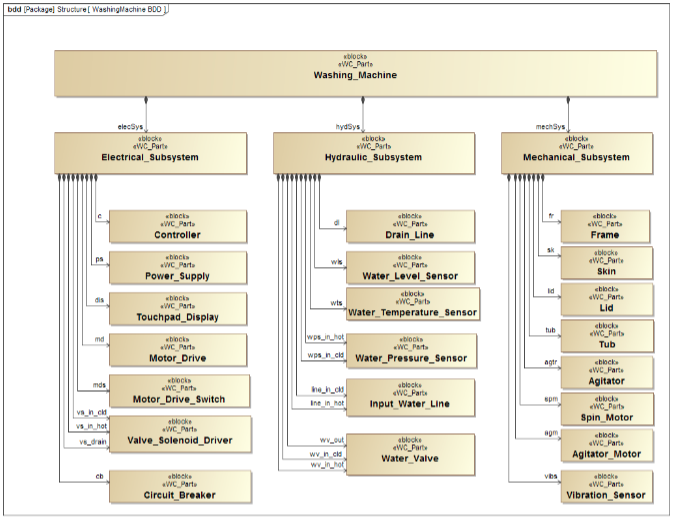Introduction
Model-Based Engineering (MBE) is valuable for smaller systems, such as consumer products. The need for collaboration between different engineering disciplines is just as real for modern appliances as jet liners.

Figure 1 Syndeia Vision
Our vision of MBE is a single system model distributed over many software tools and repositories. Our initial approach at Intercax has been to use a system architectural model created in a SysML modeling tool to help organize this Total System Model (TSM). Elements in the SysML model can be linked to elements in PLM, CAD simulation, requirements and other models in other tools, as indicated in Figure 1. The SysML model makes an effective high-level roadmap of the TSM where structure, behavior, requirements and analysis interact as peers, but it does not preclude other direct linkages between the tools that serve specific use cases.
In this series of blog posts, we will illustrate these ideas in the design of a common consumer product, a washing machine. In Part 1, we consider the structure of the system and connections between a SysML model of system composition and a PLM Bill-of-Materials (BoM). In following parts, we will look at SysML-requirements and SysML-simulation connections and the use cases they serve. We will complete the series with demonstrations of visualization and traceability across the TSM.
The Washing Machine – SysML and PLM
Figure 2 shows the structural decomposition of the washing machine in a SysML block definition diagram, using MagicDraw. We have somewhat arbitrarily separated the components into electrical, hydraulic and mechanical subsystems, but SysML allows us to create interfaces across subsystem boundaries, as we will see in Part 3 of this series.

Figure 2 Washing Machine structural decomposition
Figure 2 represents a conceptual BoM for our system, but many standard engineering workflows manage the BoM in a PLM system. One potential use case for MBE is to use the SysML BoM to create the PLM BoM. Intercax offers tools for this purpose, an MBE interoperability platform called Syndeia. In Figure 3, we show the Syndeia dashboard after the model transform has been initiated by dragging the top-level SysML block Washing_Machine in a MagicDraw model into an empty product in a PTC Windchill PLM repository.

Figure 3 Syndeia dashboard showing Magic Draw SysML (left column) and Windchill PLM (right column)
Syndeia is not carrying this out as a simple export/import operation. Each SysML block on the lefthand side of Figure 3 remains connected to the corresponding part in Windchill, with Syndeia maintaining the database of connections. If either the SysML or PLM model changes, for example, by adding or deleting a component, Syndeia can recognize the differences and even, as allowed by the organization’s engineering change process, update either model.
A second use case should be considered. Many new product designs make use of parts from previous products. Syndeia allows individual parts and assemblies managed in Windchill or other PLM systems to be pulled into SysML as building blocks for the new product design, with the same maintenance of persistent connections.
Next Steps
Organizations used to managing their BoMs in PLM systems may wonder about the need for a parallel structure in the SysML architectural model. They should consider the ongoing need to connect their structural elements to
- Workflow in project management tools like JIRA or MS Project
We will explore some of these ideas in future blog posts on our washing machine model.
Related posts:
- MBE For Consumer Electronics | Part 1 (this post)
- MBE For Consumer Electronics | Part 2
- MBE For Consumer Electronics | Part 3
- MBE For Consumer Electronics | Part 4
- MBE For Consumer Electronics | Part 5
 Intercax
Intercax Intercax
Intercax
